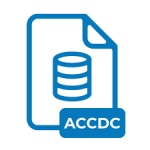.SQLITEDB File Extension

SQLite Database
| Developer | SQLite |
| Popularity | |
| Category | Database Files |
| Format | .SQLITEDB |
| Cross Platform | Update Soon |
What is an SQLITEDB file?
In the realm of digital data management, the .SQLITEDB file extension represents a cornerstone in the architecture of database systems.
These files, often referred to as SQLite Databases, are repositories for structured data, providing efficient and versatile storage solutions for a wide array of applications.
More Information.
SQLite was initially released in August 2000, with the primary goal of creating a compact, fast, and reliable database engine for embedded systems.
Its simplicity and efficiency quickly garnered attention, leading to widespread adoption across diverse platforms, including desktop and mobile applications.
Origin Of This File.
The genesis of the .SQLITEDB file extension can be traced back to the early 2000s when D. Richard Hipp conceptualized SQLite—a lightweight, self-contained, serverless database engine.
Unlike traditional database management systems (DBMS), SQLite operates directly on the local file system, eliminating the need for a separate server process and enabling seamless integration into various applications.
File Structure Technical Specification.
SQLITEDB files adhere to a structured format optimized for efficiency and flexibility. They utilize the SQLite database engine, which employs a relational database management system (RDBMS) model.
The structure comprises tables, each containing rows and columns, allowing for the organization and retrieval of data in a systematic manner.
SQLite supports various data types, including text, integer, real, blob, and null, catering to diverse data requirements.
How to Convert the File?
Here are some step how to convert the file:
- Preparation: Before starting the conversion process, gather all necessary files and tools. Ensure you have access to the .SQLITEDB file you wish to convert and have the appropriate software installed on your system.
- Identify Conversion Needs: Determine the specific conversion requirements, such as whether you need to export the entire database to a SQL script or extract specific data to a CSV file.
- Command Line Export (SQL Script): If you prefer command line interfaces, open your terminal or command prompt and navigate to the directory containing your .SQLITEDB file. Then, execute the command
sqlite3 your_database.sqlitedb .dump > output.sqlto export the entire database to a SQL script. - Command Line Export (CSV): Similarly, you can export specific data to a CSV file using the command
sqlite3 -header -csv your_database.sqlitedb "SELECT * FROM your_table;" > output.csv. Customize the command with your database file name and the SQL query for the desired table. - Database Management Tool Export: Alternatively, utilize database management tools like DB Browser for SQLite or SQLiteStudio. Open your chosen tool, import your .SQLITEDB file, and navigate to the export function. Follow the on-screen prompts to select the export format (SQL, CSV) and save the converted file to your desired location.
- Third-Party Conversion Tools: Explore third-party conversion tools if you prefer a specialized solution. Some online converters offer simple interfaces for uploading .SQLITEDB files and converting them to various formats. Alternatively, research and choose a standalone software application tailored for SQLite database conversions.
- Validation and Completion: After conversion, verify the integrity and completeness of the converted files. Ensure that the exported data matches your expectations and requirements. Once satisfied, the conversion process is complete, and you can use the converted files as needed.
Advantages And Disadvantages.
One of the primary advantages of .SQLITEDB files is their lightweight nature and minimal overhead, making them ideal for resource-constrained environments. Additionally, SQLite offers ACID (Atomicity, Consistency, Isolation, Durability) compliance, ensuring data integrity and reliability.
Moreover, its cross-platform compatibility facilitates seamless integration into multi-platform applications.Despite its numerous advantages, SQLite has limitations, particularly concerning scalability and concurrency.
Due to its single-writer design, concurrent write operations may lead to performance bottlenecks in high-traffic applications.
Furthermore, SQLite lacks built-in user management and authentication mechanisms, requiring additional implementation for secure access control.
How to Open SQLITEDB?
Open In Windows
Opening .SQLITEDB files in Windows can be accomplished using SQLite-compatible applications like DB Browser for SQLite, SQLiteStudio, or HeidiSQL.
These tools provide intuitive user interfaces for viewing, querying, and managing SQLite databases on the Windows platform.
Open In Linux
Linux users can access .SQLITEDB files using native SQLite utilities or third-party database management tools available for the Linux environment.
Command-line tools like sqlite3 provide a convenient interface for executing SQL queries and managing SQLite databases directly from the terminal.
Additionally, GUI-based applications such as SQLiteStudio offer comprehensive database management capabilities with cross-platform support.
Open In MAC
Mac users can leverage SQLite-compatible applications like DB Browser for SQLite, Base, or SQLiteManager to open and manage .SQLITEDB files on macOS.
These applications provide user-friendly interfaces for browsing database contents, executing SQL queries, and performing database administration tasks seamlessly on the Mac platform.
Open In Android
Opening .SQLITEDB files on Android devices typically involves utilizing SQLite-compatible apps available on the Google Play Store.
Applications like SQLite Database Editor and aSQLiteManager enable users to access and manipulate SQLite databases directly on their Android devices, offering functionalities such as querying data, importing/exporting databases, and executing SQL statements on the go.
Open In IOS
iOS users can access .SQLITEDB files using SQLite-compatible apps available on the App Store. Applications like SQLiteFlow and SQLite Viewer provide convenient interfaces for browsing.
Querying, and managing SQLite databases on iOS devices, offering features such as syntax highlighting, query execution, and database management functionalities tailored for mobile use.
Open in Others
Apart from the aforementioned platforms, .SQLITEDB files can also be opened and manipulated using cross-platform database management tools like SQLiteStudio, which offers compatibility with Windows, Linux, and macOS.
Web-based SQLite editors like SqliteWebAdmin provide a convenient means of accessing and managing SQLite databases directly from a web browser, offering flexibility and convenience across diverse environments.













